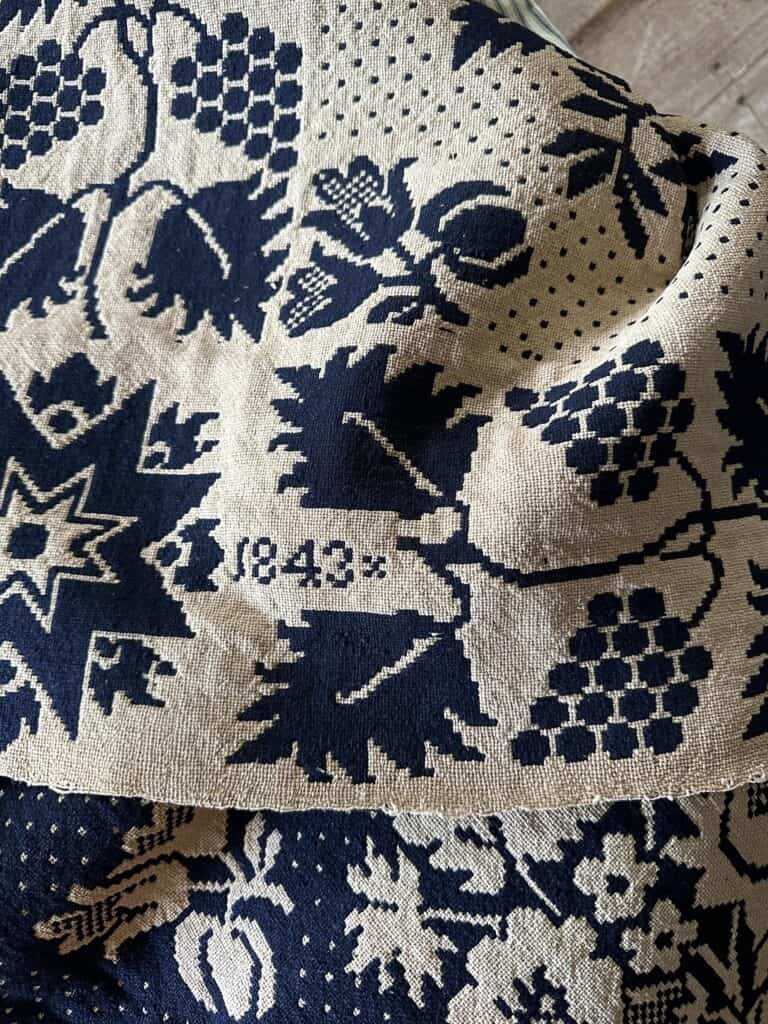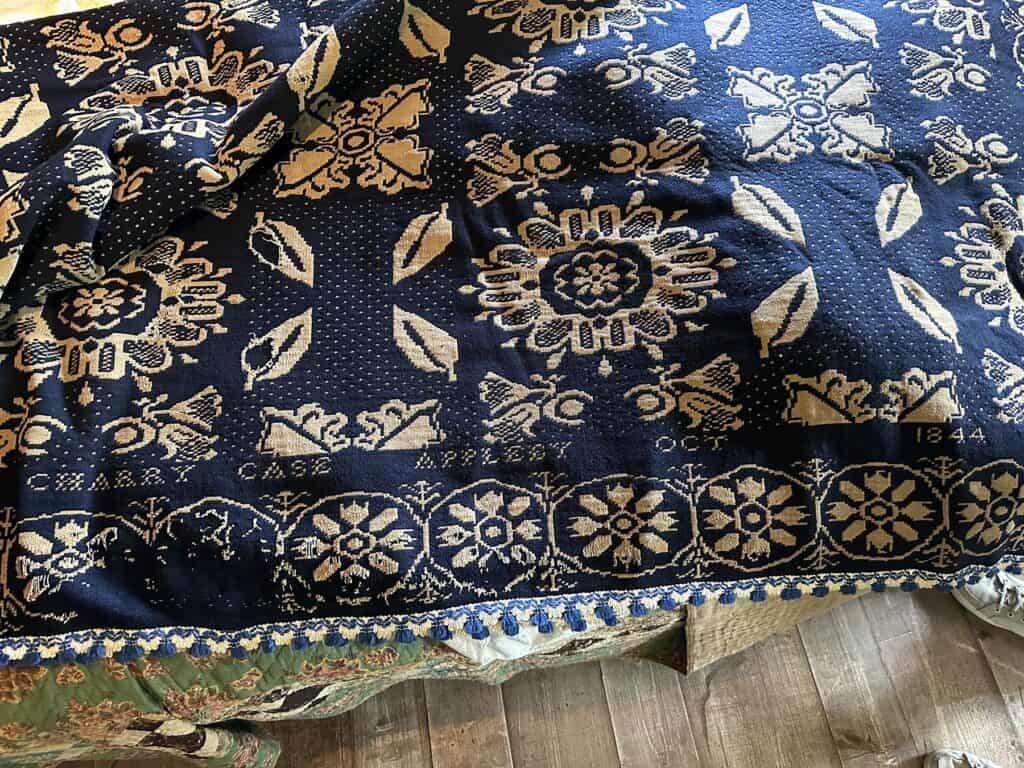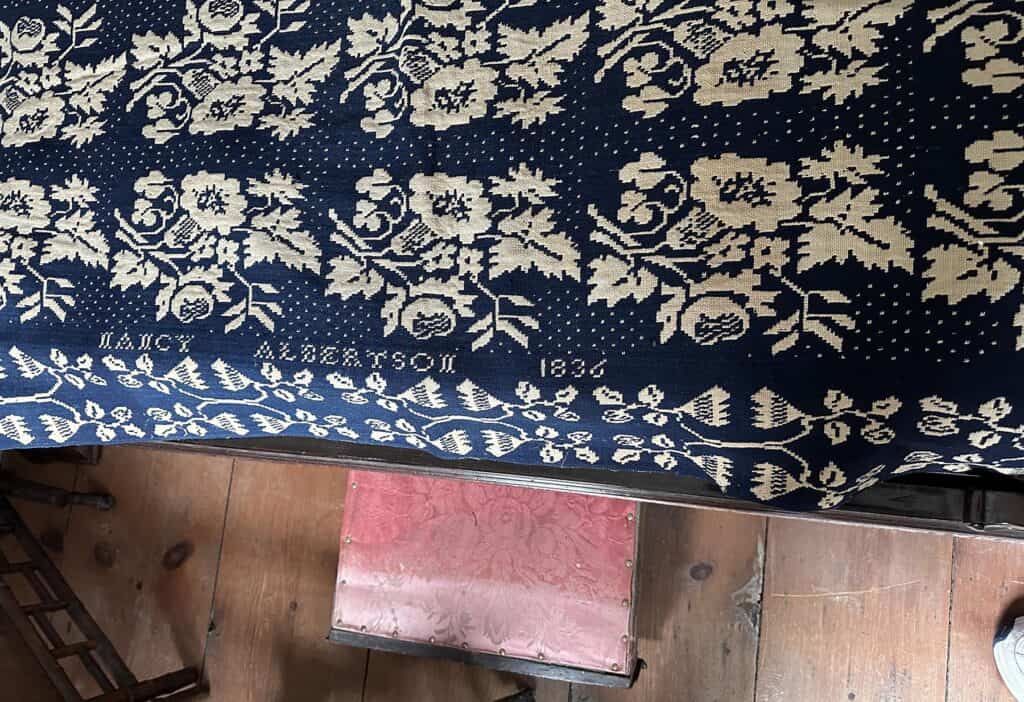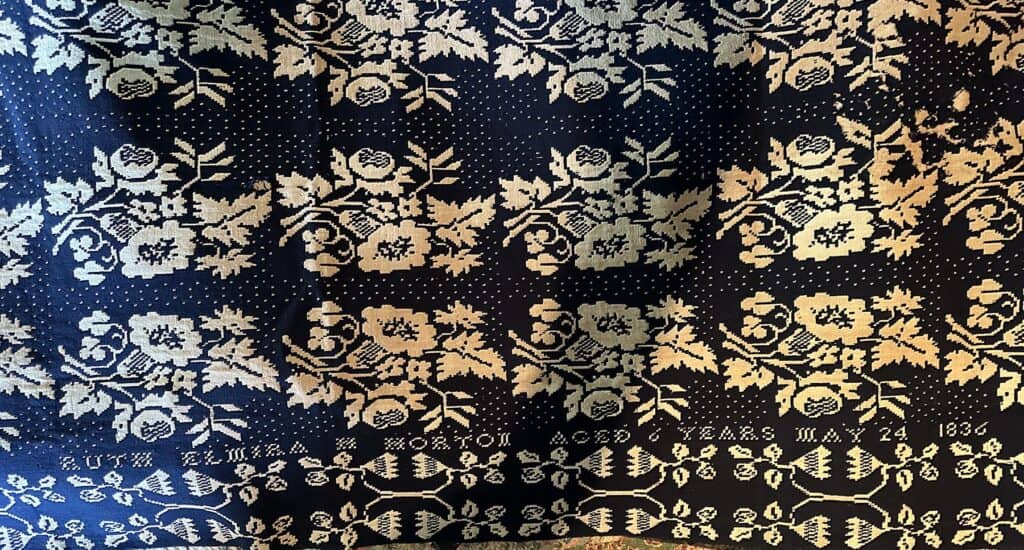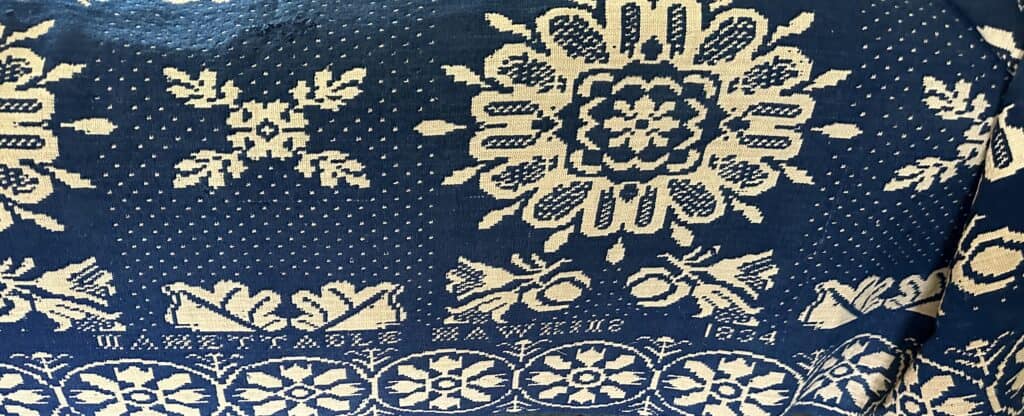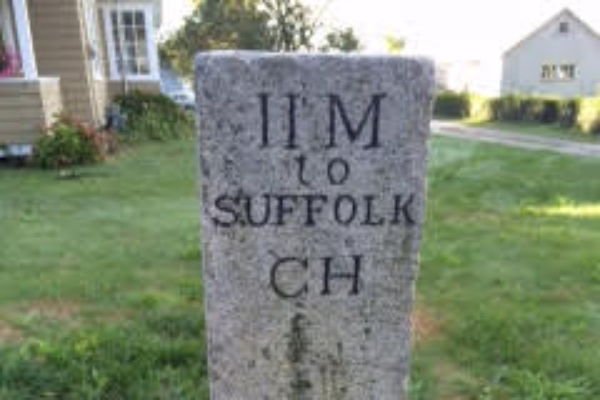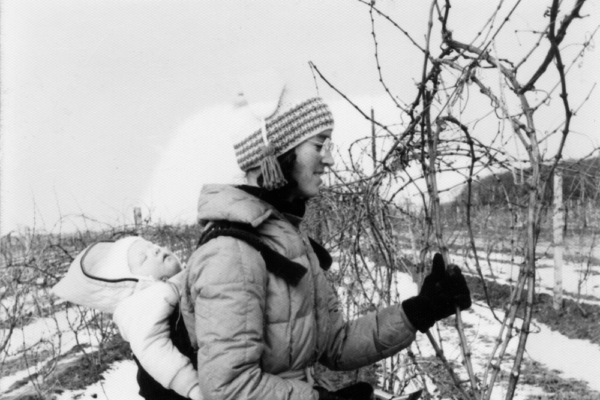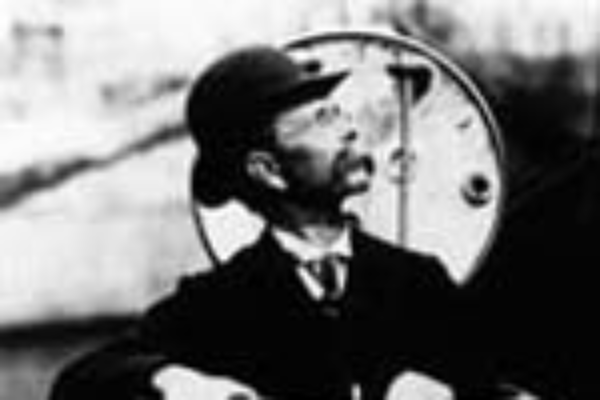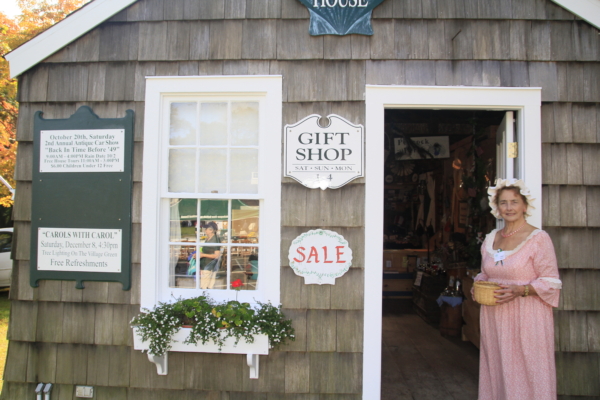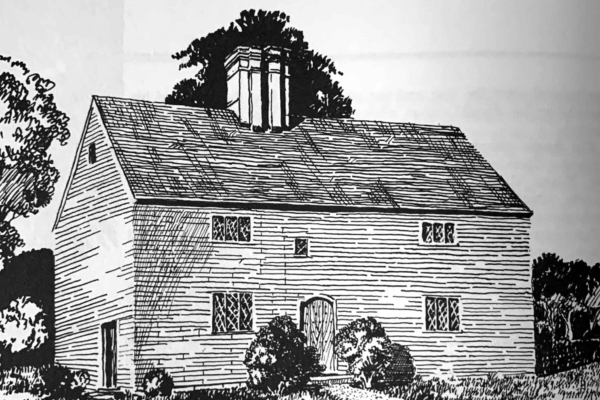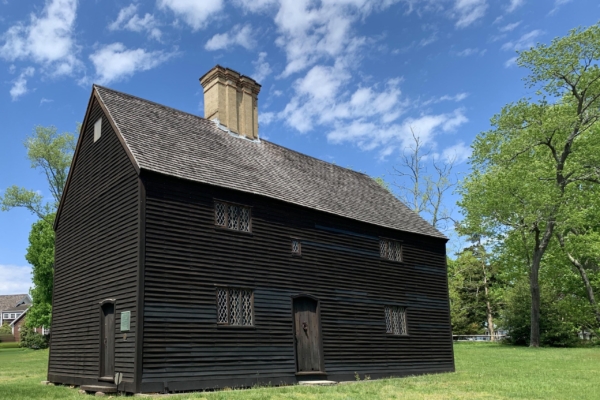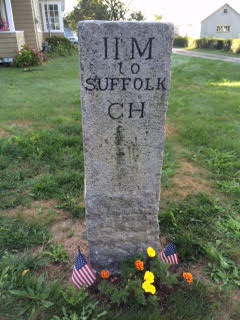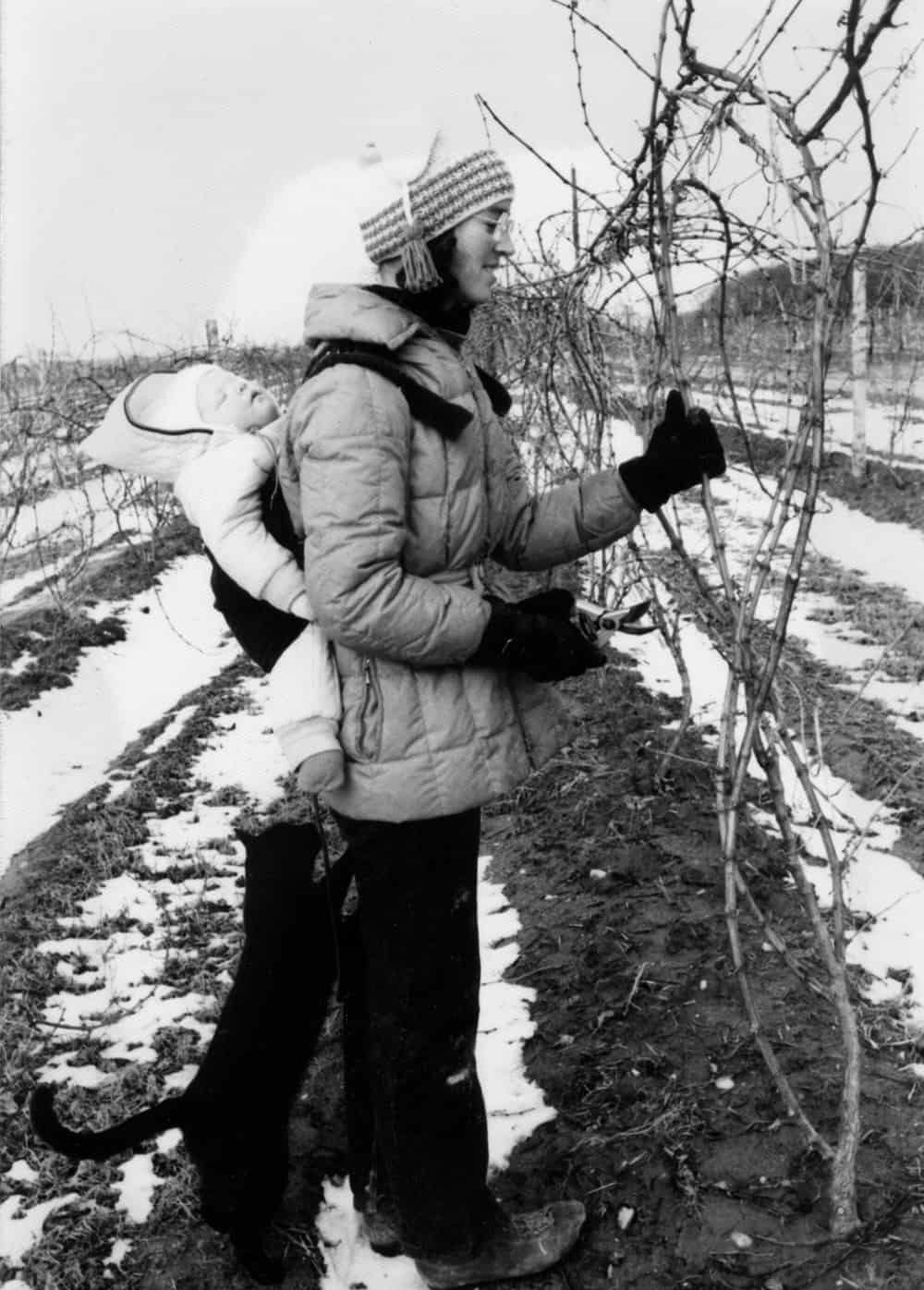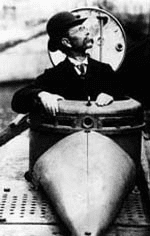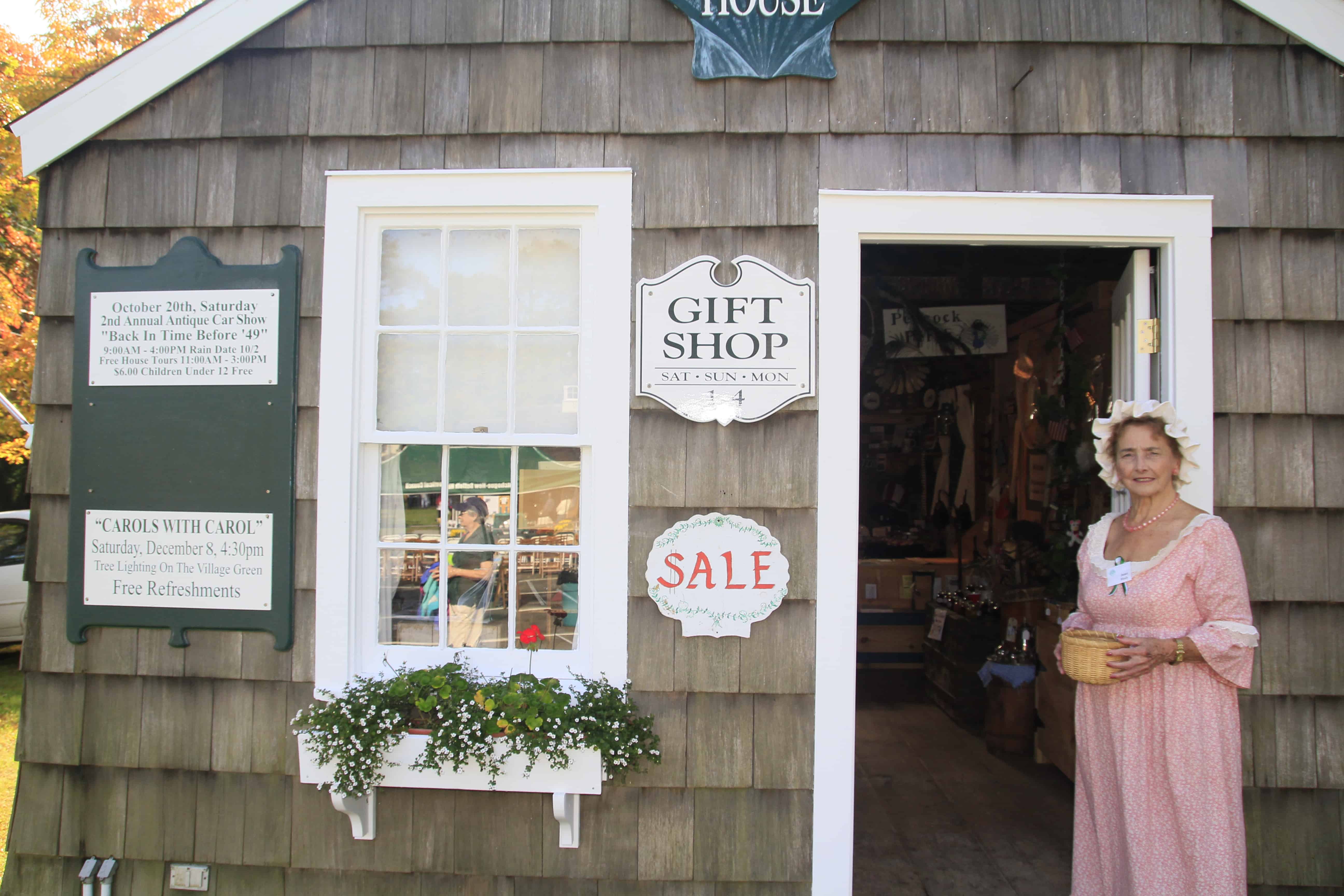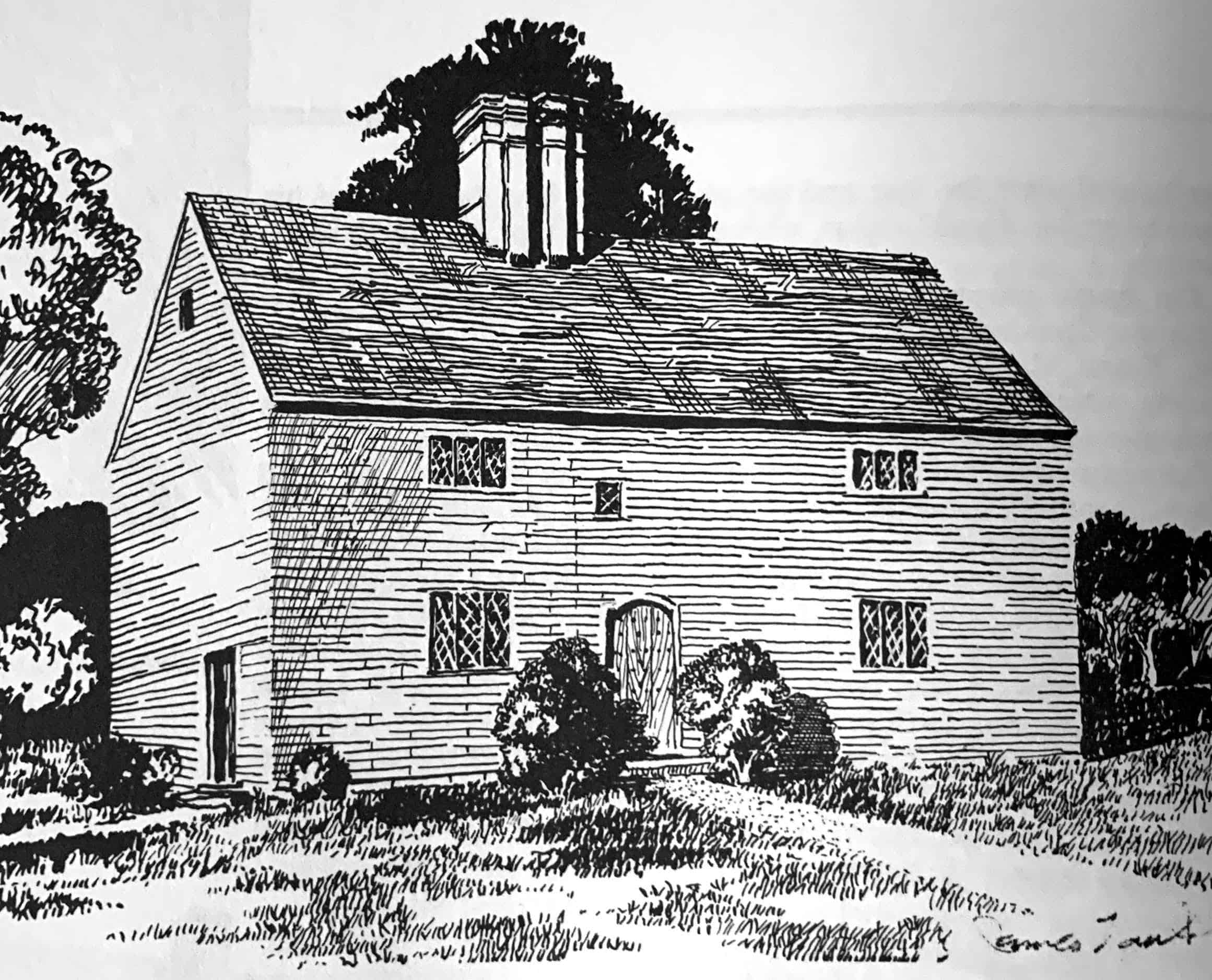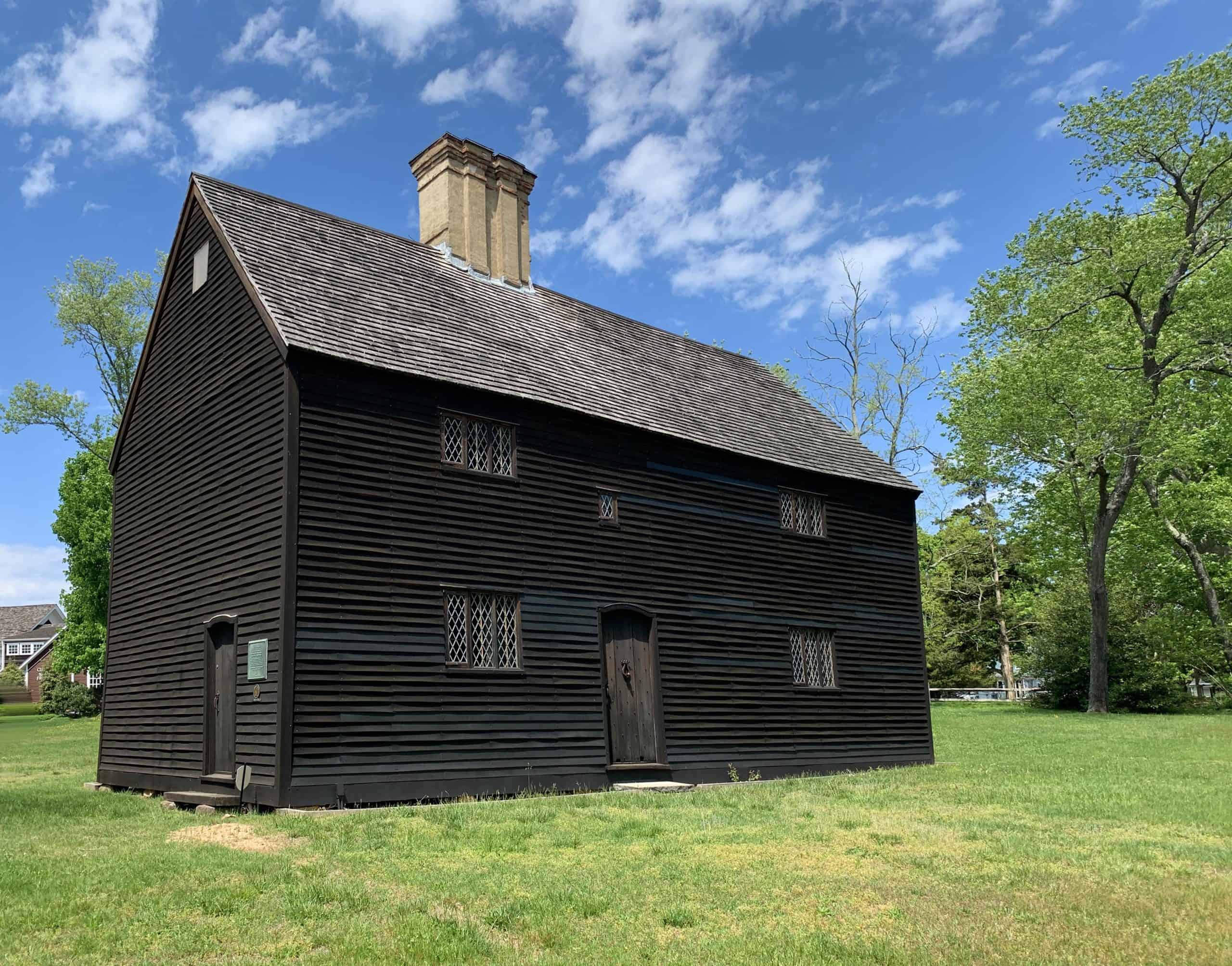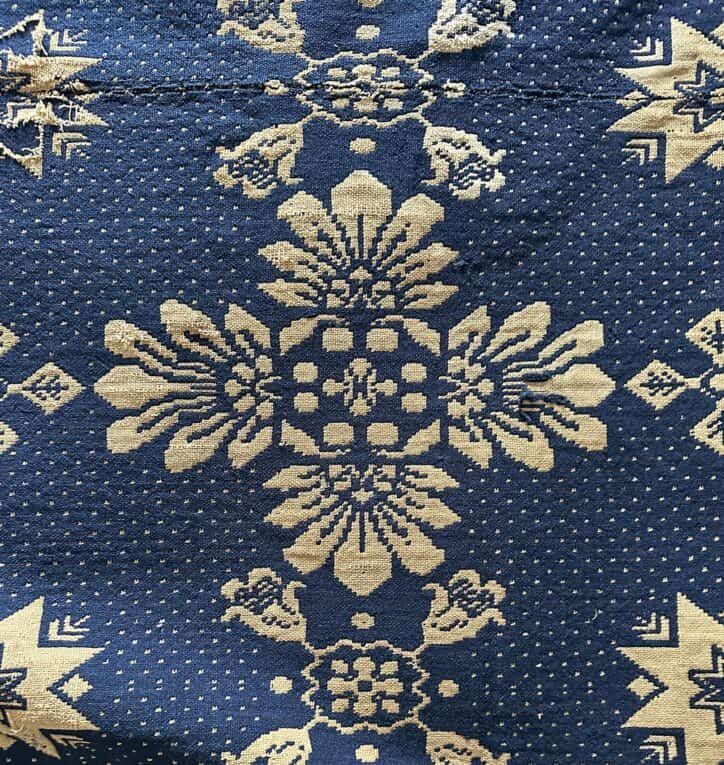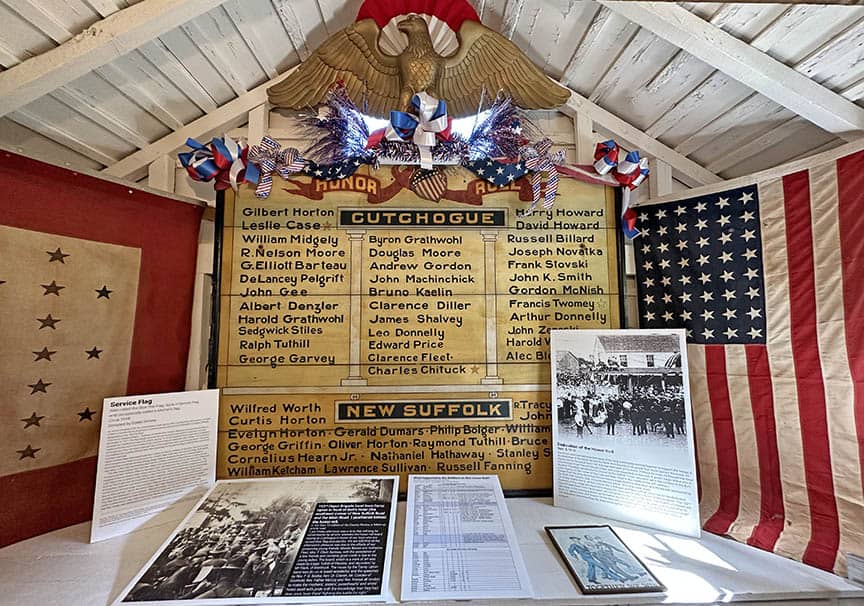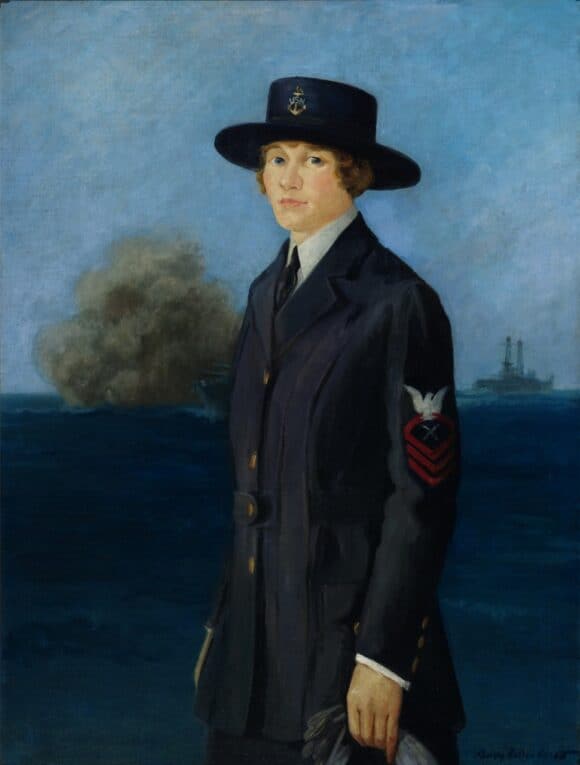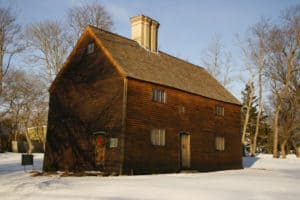I was first introduced to Emily Werner in October of 2021 when Preservation Long Island published her blog on woven coverlets entitled: Uncovering the Past: An Examination of Long Island Coverlet Styles and Motifs. Emily was a collections and curatorial intern at Preservation Long Island after finishing her coursework for her M.A. in Fashion and Textile Studies: History, Theory, and Museum Practice at the Fashion Insitute of Technology. As curator of the Mattituck-Laurel Historical Society, I had been interested and curious about them since I found about half a dozen of them in their collection. Although I was aware of Susan Rabbit Goody’s consummate work on the subject: Woven History: The Technology and Innovations of Long Island Coverlets, 1800-1860, copies aren’t easy to come by, and I hadn’t seen one at that time, so Emily’s blog was the first informative piece on the subject that I had read.
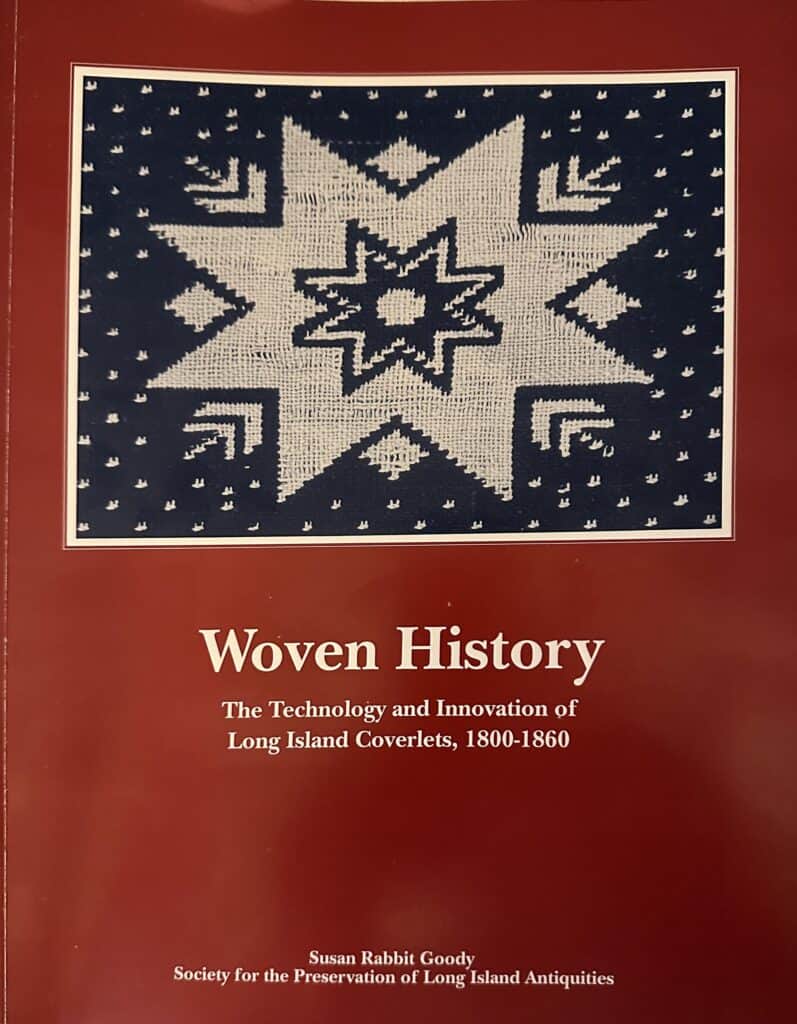
Susan Rabbit Goody: Woven History: The Technology and Innovations of Long Island Coverlets, 1800-1860. If you have more than a passing interest in woven coverlets, I recommend you click the link and read Emily’s blog. Then I suggest you find a copy of Rabbit Goody’s book, which its publisher still sells: Preservation Long Island.
I was interested in woven coverlets because of their attractive yet simple folk art designs. I also liked the feel of them, how thick and heavy they were; you just knew they had to be warm. Thick, heavy warm, and beautiful, you can understand why they might be highly valued in a cold, early American bedroom. But as someone who prizes local provenance, I appreciated how uniquely Long Island many aspects of these coverlets are. Most of the coverlets found on, or made on Long Island are blue (indigo dyed wool for the pattern)and white {Cotton or linen for the warp) most of them have the person’s name they were made for, the date, and some, have the place name or other information. And as a historian, beautiful hand-made utilitarian object + place+ name + date = goldmine- a wealth of information that allows you to tell a clear story about a point in time. Another identifiable point of Long Island coverlets was the pattern. Long Island coverlets patterens are fairly well documented, with about a dozen motifs that repeat geometrically in various combinations.
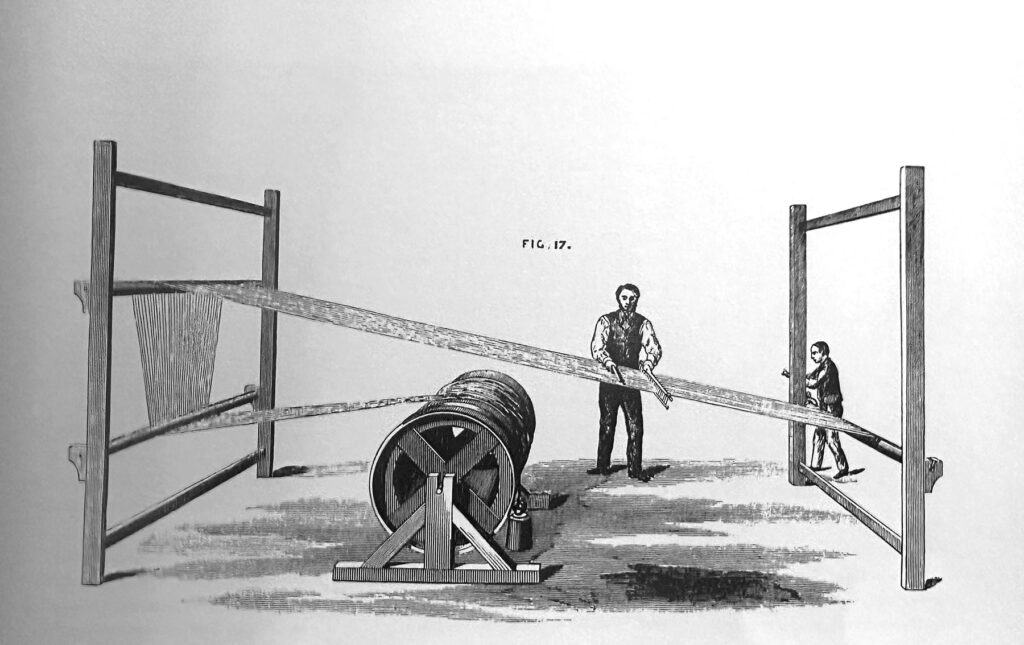
Now the Curator/Collections Manager of Huntington Historical Society, Emily continues to be interested in studying textiles woven on Long Island in the early 19th century, particularly coverlets. She recently curated an exhibit called From Farm to Fabric: Early Woven Textiles of Long Island and has been asked to give a presentation on Long Island coverlets at the National Museum of the American Coverlet in Bedford, PA, in September. She has contacted historical societies and museums across Long Island to see if they have any newly acquired or under-researched coverlets or textile-related archival materials in their collections. Her goal is to continue Rabbit Goody’s research, which conducted an inventory of all known Long Island coverlets. Since the project was completed 30 years ago, she believes that since then, it’s possible that institutions may have accepted new coverlets into their collection.
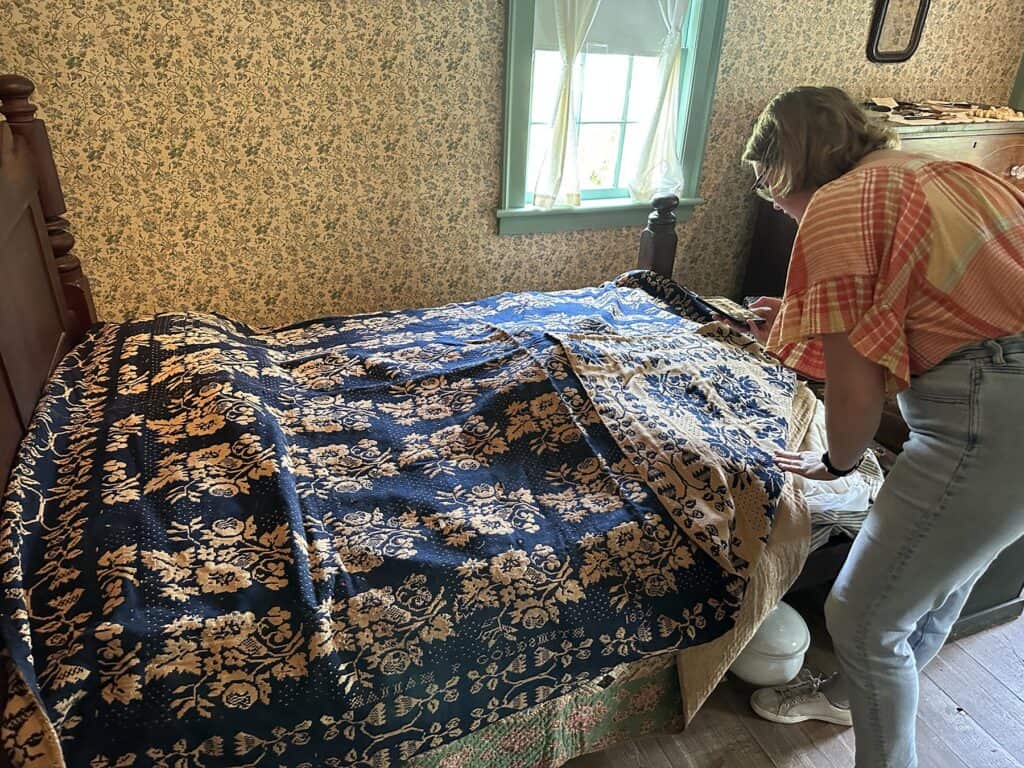
I was happy to host Emily for the day as we explored the woven coverlets in the Mattituck and Cutchogue collections. I was particularly interested since, for some reason, the Mattituck Historical Society was not included in Goody’s book. I was hoping some new information might be available for Emily to uncover. Exploring the coverlet collections with Emily enabled me to view them from a new perspective. She pointed out that one of the patterns in Cutchogue was distinctive to a weaver located in Riverhead, and she pointed out how all of our coverlets were finished with a starburst in the corner. Mattituck has an “overshot” coverlet that could predate the earliest dated coverlet we have.
Here are the names and dates woven into the borders on some of the woven coverlets found in the Mattituck and Cutchogue collections:
